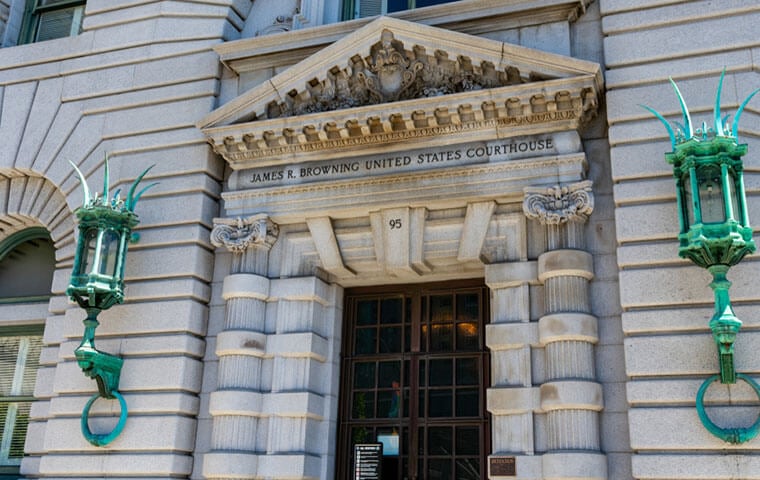 The U.S. Court of Appeals for the Ninth Circuit granted the administration’s emergency request to stay an injunction while suits continue to play out. Image: Michael Vi/Shutterstock.com
By: FEDweek Staff
The U.S. Court of Appeals for the Ninth Circuit granted the administration’s emergency request to stay an injunction while suits continue to play out. Image: Michael Vi/Shutterstock.com
By: FEDweek StaffA second federal appeals court has lifted the last remaining injunction that trial judges had issued against the executive order to revoke union representation rights for the majority of federal employees, allowing agencies to move ahead with RIFs and reorganizations without having to comply with any commitments they had made in contracts to soften the impact on employees.
The U.S. Court of Appeals for the Ninth Circuit granted the administration’s emergency request to stay that injunction, after previously issuing a temporary stay while it considered that request. That mirrors the decision by the U.S. Court of Appeals for the District of Columbia Circuit in the two challenges to the executive order, the former brought by the AFGE union and others and the latter by the NTEU union.
In both cases, the suits continue in the trial courts. But with the injunctions lifted, any potential decisions in favor of the unions from the lower courts might come only after layoffs have happened.
The appeals courts did not address the merits of the unions’ complaints—essentially, that the executive order’s citation of security and related grounds for ending union representation was a pretext for political retaliation against them—but rather focused on legal standards of injunctions.
But unlike the brief decision from the appeals court in the District of Columbia in the NTEU case, the Ninth Circuit court’s order in the AFGE case gives some indication that unions ultimately face a high bar to overcome a President’s discretion on eligibility for representation.
Said the three-judge panel, “We question whether we can take up such arguments, which invite us to assess whether the President’s stated reasons for exercising national security authority—clearly conferred to him by statute—were pretextual. But even if we assume that the Order’s line drawing could constitute some evidence of targeting, on the balance of the record before us, the Order reflects that the President would have taken the same action even in the absence of the protected conduct.”
The order and an accompanying White House statement “fairly indicate that the President would have issued the Order, regardless of Plaintiffs’ speech, based on the perceived impact of union activities and collective bargaining on the sound operation of agencies and subdivisions with national security-related missions,” the decision said.
Two other federal district courts meanwhile have denied the administration’s requests for declarations that the order was within the President’s discretion.
OPM Advises Agencies on Conducting RIFs During Shutdown
Updated Shutdown Contingency Plans Show Range of Impacts
Use Shutdown as Justification for More RIFs, OMB Tells Agencies
Unions Win a Round in Court Disputes over Anti-Representation Orders
Deferred Resignation Periods End for Many; Overall 12% Drop
Senate Bill Would Override Trump Orders against Unions
See also,
How to Handle Taxes Owed on TSP Roth Conversions? Use a Ladder
The Best Ages for Federal Employees to Retire
Best States to Retire for Federal Retirees: 2025

